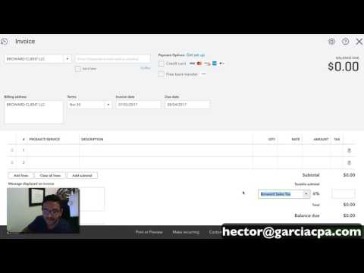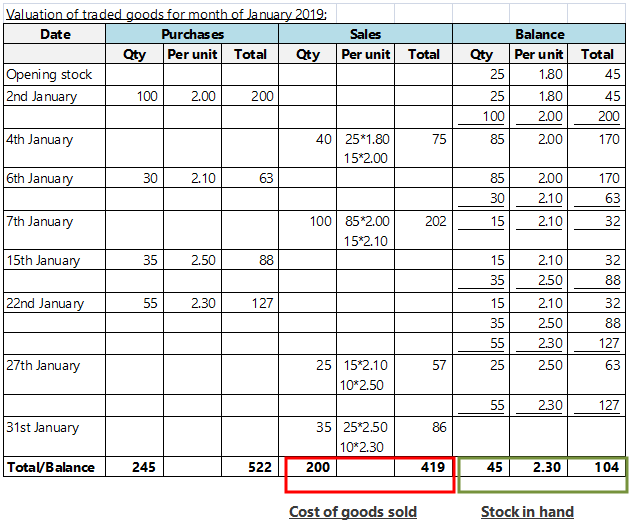Content
That said, employers can help mitigate some of this risk by establishing thoughtful plan designs and implement the use of trusts to hold plan assets. Nonqualified deferred compensation plans are generally subject to section 409A of the Internal Revenue Code, along with other federal tax rules, which impose specific requirements on such plans . Failure to satisfy these requirements can result in significant adverse consequences, including inclusion in the employee’s taxable income of all vested compensation deferred under the plan, plus interest and a 20% penalty tax.
What is the primary difference between a nonqualified deferred compensation plan and a qualified plan?
Qualified plans have tax-deferred contributions from the employee, and employers may deduct amounts they contribute to the plan. Nonqualified plans use after-tax dollars to fund them, and in most cases employers cannot claim their contributions as a tax deduction.
Please consult with your insurance agent/broker or insurance company to determine specific coverage needs as this information is intended to be educational in nature. You receive dividends annually from the stock that are unrestricted, but you must pay tax on them every year. A lump sum is paid if the employee dies before retirement or is fired from the company. As a benefit has risen since the Great Resignation had employers scrambling to draw and retain talent, says Emily Langdon, a partner at Husch Blackwell LLP who advises employers in implementing NQDC plans. Consulting with tax professionals is also crucial in structuring the NQDC plan in a tax-efficient manner, considering both employer and employee tax implications. Employers should consult with tax professionals to ensure that the plan is structured in a way that maximizes tax benefits and minimizes tax liabilities.
How to implement an NQDC plan
Second, unlike a qualified retirement plan, when taking withdrawals from an NQDC, participants must schedule distributions in advance. “Excess benefit plans,” which solely provide https://quick-bookkeeping.net/ benefits to employees, due to benefit limitations under the employer’s qualified plan. At Voya, we’ve been helping employers provide NQDC plans for more than 50 years.
Section 101 of the Internal Revenue Code requires that an employer must provide notice and seek consent before placing life insurance on the life of an employee. Company may choose to provide NQDC retirement benefits on a tax-advantaged basis through policy loans and withdrawals. Under the doctrine of constructive receipt, the IRS can tax you prior to your “hands-on” receipt of funds if the funds are credited to your account, set aside, or otherwise made available to you without substantial restriction. In other words, once the funds have been earned and are payable to you on demand, you must report the income even if you choose not to actually accept current payment of the funds.
NQDC Plans Seen as Key in Attracting, Retaining Talent
NQDC plans are most suitable for employers that are financially sound and have a reasonable expectation of continuing profitable business operations in the future. In addition, since NQDC plans are more affordable to implement than qualified plans, they can be an attractive form of employee compensation for a growing business that has limited cash resources. NQDC plans come with risks such as reduced protections, lack of investment diversification, and unexpected payout accelerations.
- Withdrawals may be subject to taxation within the first fifteen years of the contract.
- In recent years, Stephens says, organizations are expanding eligibility to attract new hires and retain valuable employees who may have been previously ineligible for the company’s NQDC plan.
- You can learn more about the standards we follow in producing accurate, unbiased content in oureditorial policy.
- Required minimum distributions generally must begin once the participant reaches RMD age or retires from employment with the plan sponsor, if later than RMD age and the participant is not considered a 5% owner.
- The employer may guarantee either a fixed rate of return or the return earned by a selected mutual fund or index.
A restrictive endorsement allows the employee to change the beneficiary or reallocate investments in the policy, but withdrawing or borrowing money from the account would require the employer’s consent. A vestment repayment schedule can also be part of the plan, requiring the employee to repay any amount not vested. So if an employee left after earning a cumulative bonus of $20,000 but was only 20% vested, then the employee would be required to repay $16,000.
What Is a Nonqualified Deferred Compensation?
If the company goes bankrupt, a NQDC plan is considered an unsecured debt of the company, which may mean a total loss of your contribution. NQDC plans work as an employee retention tool not only because they are attractive savings vehicles but also because employers are allowed to apply discretionary retention features. For example, an employer may choose to give the employee a large bonus that vests over the course of five to ten years, thereby incentivizing retention.
As a tool for attracting and retaining top talent, a NQDC plan offers several advantages compared to qualified deferred programs. Since NQDC rules exempt plans from most ERISA and reporting requirements, no limitations on deferred amounts and no minimum distribution rules apply to these plans. Also, a NQDC plan can discriminate in favor of higher compensated employees and amongst employees in various compensation levels, which becomes problematic in a qualified retirement plan. Plan distributions can be structured in various ways, from payments over a specific time period to one-time lump sum payments. Customization isn’t only applicable to salary but also equity and bonuses. If properly designed, non-qualified plans are not required to follow ERISA based participation rules.
Retirement plans
Nonqualified deferred compensation plans can provide a valuable tool for high-earning individuals to save for retirement and mitigate current income taxes. Nonqualified deferred compensation is an unsecured and unfunded promise to pay a future benefit for a select group of management or highly compensated employees. A supplemental executive retirement How Nonqualified Deferred Compensation Nqdc Plans Work plan is simply an unfunded NQDC plan that provides you with benefits that supplement benefits you are entitled to receive under your employer’s qualified retirement plan. A SERP can be either a defined benefit plan or a defined contribution plan. Corporate-owned life insurance is a life insurance policy that your employer takes out on your life.
- However, salary deferral contributions are subject to Social Security , Medicare and federal unemployment taxes; employer contributions are not subject to FICA and FUTA taxes.
- By participating in an NQDC plan, individuals become creditors of the company, which means they could lose part or all of their investment if the company becomes insolvent and declares bankruptcy.
- Of course, many executives, like Susan, have after-tax savings opportunities as well, such as a taxable account, after-tax IRA, a Roth conversion and/or after-tax contribution option, and/or a tax-deferred annuity.
- “An NQDC plan can typically be structured to meet an employer’s goals while still complying with other applicable laws,” she says.
These choices will drive different investment behaviors that may require an expanded investment menu. Typically, these plans are designed for no more than 10 percent of a total employee population, although in practice, they have been more limited. In recent years, Stephens says, organizations are expanding eligibility to attract new hires and retain valuable employees who may have been previously ineligible for the company’s NQDC plan. In fact, according to the same PLANSPONSOR survey, 66 percent of employees who were eligible to enroll in their employer’s nonqualified plan chose to participate, up from 53 percent in 2018. The employer can make additional contributions into the account but is not required to do so.




